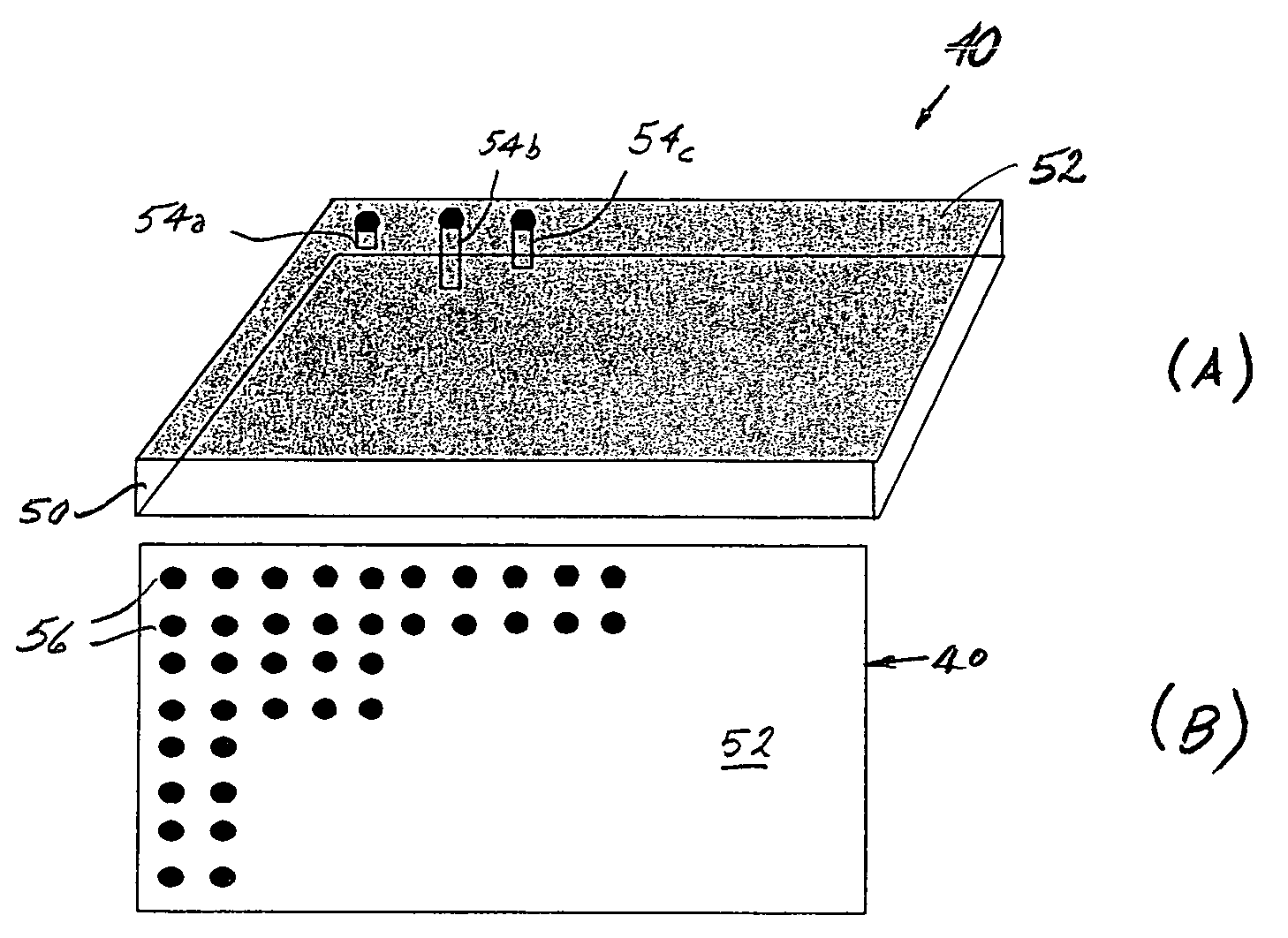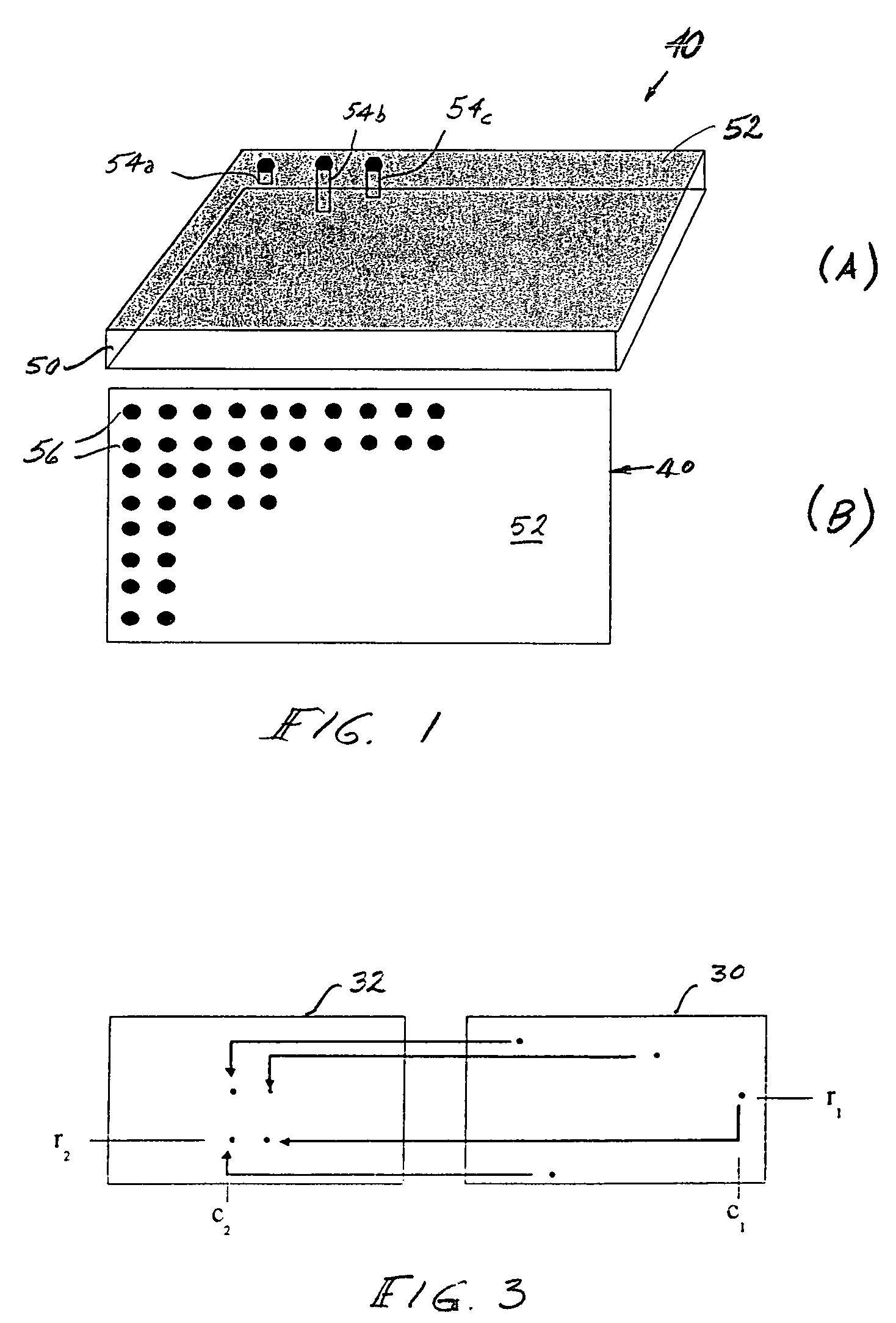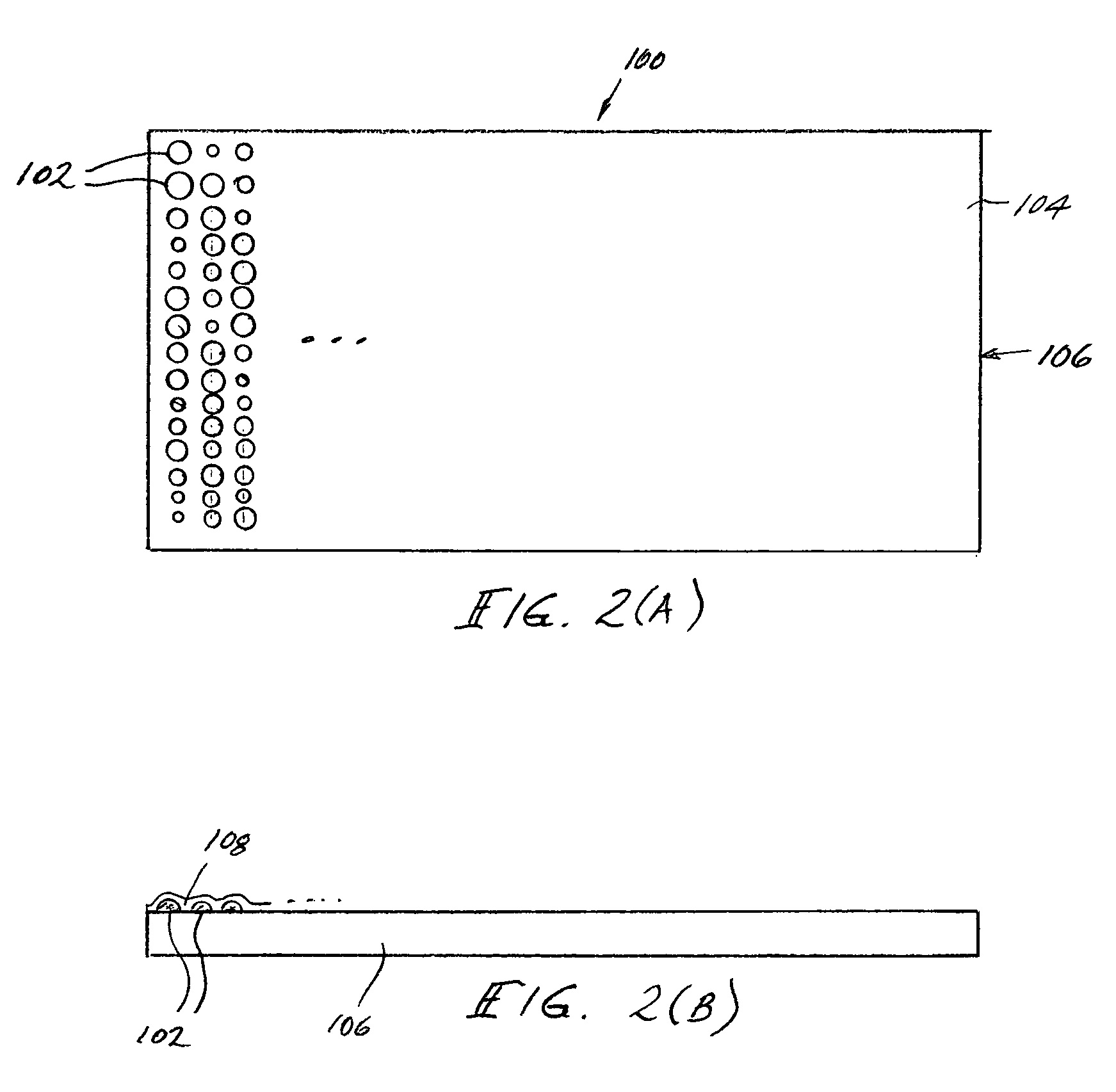Devices and methods for storing data
a data storage and data technology, applied in the field of data storage devices, can solve the problems of extremely difficult or impossible to corrupt or erase the depth-wise arrangement of data in this manner
- Summary
- Abstract
- Description
- Claims
- Application Information
AI Technical Summary
Problems solved by technology
Method used
Image
Examples
first representative embodiment
[0029]A data-storage device 40 according to this embodiment comprises a three-dimensional medium 50 having a surface 52 on which micro- or nano-sized holes 54a, 54b, 54c, . . . , of varying depths and / or widths are formed (e.g., using a drill, laser, or punch, using a lithographic method, using an ion-etching method, by casting, etc.). The holes desirably are in an array on the surface 52 and extend depthwise into the medium 50, as shown in FIGS. 1(A)-1(B). Each hole represents a respective “locus” that stores a respective unit of data. The characteristics of the unit of data are determined, at least in part, by the depth and / or width of the hole. In other words, a key step in recording data in or on the device for storage purposes is forming the holes. FIG. 1(A) is a perspective view, and FIG. 1(B) is a top plan view of the device 40. The holes 54a, 54b, 54c, . . . , are not limited to round profiles; they can be any desired profile such as polygonal, elliptical, oblong, etc.
[0030]...
second representative embodiment
[0047]Referring to FIGS. 2(A)-2(B), a data-storage device 100 according to this embodiment comprises a distribution of micro- or nano-sized loci (“dots”) 102 on the surface 104 of an appropriate substrate 106 (e.g., thin film). The loci 102 are discrete and can be in an ordered or non-ordered array or distribution. Each locus 102 contains a respective amount and / or type of magnetically responsive particles. The loci 102 are not limited to a round shape; they can be any desired shape such as polygonal, elliptical, oblong, etc. Round loci may be advantageous because they are relatively easy to form, and a large number of them can be placed in a small area. The loci 102 also can be of any desired width within a practical range of widths. The loci store respective units of data, wherein different loci can store a respective quantity and / or quality of data. In certain applications such as security applications, it may be desirable that some of the loci 102 not carry any data at all.
[0048...
third representative embodiment
[0060]In a device 60 according to this embodiment, micro- or nano-sized loci (“dots”) 62a, 62b, 62c, 62d, . . . , are printed or otherwise formed on the surface 64 of a substrate 66. The loci have magnetic properties. The loci also have selected colors (e.g., different colors of visible light, infrared light, or ultraviolet light). The colors are selected from a defined range, in contrast to the range of magnetic properties discussed in the second representative embodiment. The data that can be stored in the device 60 is a function of, inter alia, the color of each of the loci. If the width of the loci is also varied, additional information states can be associated with each locus.
[0061]The substrate 66 may be plastic, paper, woven or non-woven web, or other suitable material upon which the inks can be printed. The dots can be printed or otherwise deposited on the surface 64 in a manner as described in the second representative embodiment. Upon completion of dot-printing, the substr...
PUM
 Login to View More
Login to View More Abstract
Description
Claims
Application Information
 Login to View More
Login to View More - R&D
- Intellectual Property
- Life Sciences
- Materials
- Tech Scout
- Unparalleled Data Quality
- Higher Quality Content
- 60% Fewer Hallucinations
Browse by: Latest US Patents, China's latest patents, Technical Efficacy Thesaurus, Application Domain, Technology Topic, Popular Technical Reports.
© 2025 PatSnap. All rights reserved.Legal|Privacy policy|Modern Slavery Act Transparency Statement|Sitemap|About US| Contact US: help@patsnap.com



